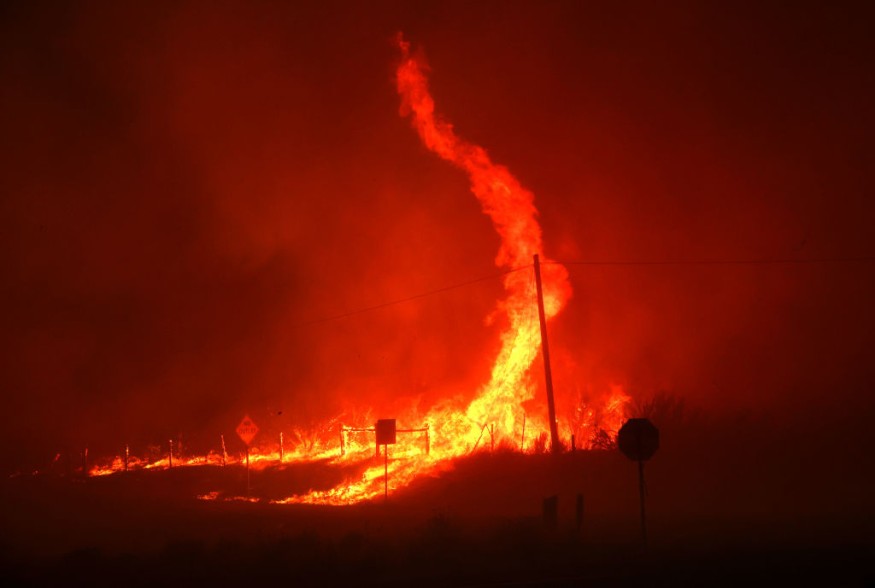
People are still in shock by recent fire whirl breakout episodes near the California-Nevada state line, most likely because the phenomenon is unpredictable and uncommon.
What Makes a Fire Whirl?
As a wildfire burns in the Mojave National Preserve, several hazardous and unexpected "fire whirls" have started to occur near the California-Nevada state line, propelling spinning columns of smoke and flame rising to a few hundred feet in the air, according to the National Park Service.
"Fire whirls," defined as a "vortex" of flame, smoke, and debris that form in the desert when hot air rises and frigid air is pushed below, have been observed at the Mojave National Preserve.
High heat and strong winds combine to form a "spinning column of fire," according to the preserve via Forbes, which can change directions abruptly, accelerate and decelerate swiftly, and range in height between a few feet and several hundred.
Fire Whirls By Any Other Name
Fire whirls are also known as "firenados" or "fire tornados," but these smaller phenomena are not the same as a full-blown fire tornado, which will produce its own firestorm cloud and have surface winds as strong as conventional tornadoes, according to the Library of Congress. Instead, they are produced by the heat of flames.
An uncommon type of atmospheric tornado is a fire tornado. Another name for them is "pyrogenetic tornadoes," which alludes to the manner they form, with a tornado-strength vortex similar to a typical tornado.
Sometimes, phrases like "fire devil" or "firestorm" are used synonymously. Even professionals can disagree on the differences across these phenomena due to the nomenclature used, according to Aljeezera.
Extremely Dangerous
Fire whirls are capable of spreading flaming embers far beyond the original site of the fire and starting new fires due to their size and speed, which puts firefighters in "extremely dangerous" situations.
Fire whirls, particularly the larger ones, pose a serious threat to firefighters' safety because of their increasing fire intensity, spotting, irregular pace of spread, and wind damage. Fire whirls can be as small as 1 meter in diameter and move at speeds less than 10 m/s or as large as 3 km and move at speeds over 50 m/s. They have been seen in volcanic eruptions, wildland fires, urban flames, and oil spill fires.
They share a dynamical relationship with other spinning atmospheric phenomena like tornadoes, dust devils, and water spouts, according to the Forest Service - US Department of Agriculture.
Fire Whirls in History
The first time that a fire whirl was documented in the scientific literature was in 1926 when a five-day California fire was characterized as having multiple "violent whirlwinds" in a Monthly Weather Review article. Since then, fire whirls have been documented for a century. The fire, which was sparked when lightning struck oil tanks, resulted in two fatalities and $15 million in property damage, or $255 million in today's dollars.
According to the Library of Congress, fire whirls were also observed following the bombings of Germany's Hamburg and Dresden during World War II and the 2018 Carr Fire in California.
During the Canberra bushfires in 2003, it reportedly took a fire whirl of .04 seconds to burn more than 300 acres in Australia.
A fire whirl in Tokyo in 1923 claimed the lives of 38,000 people within 15 minutes. This compiled report of previous fire whirls was published by Forbes.
© 2025 NatureWorldNews.com All rights reserved. Do not reproduce without permission.





